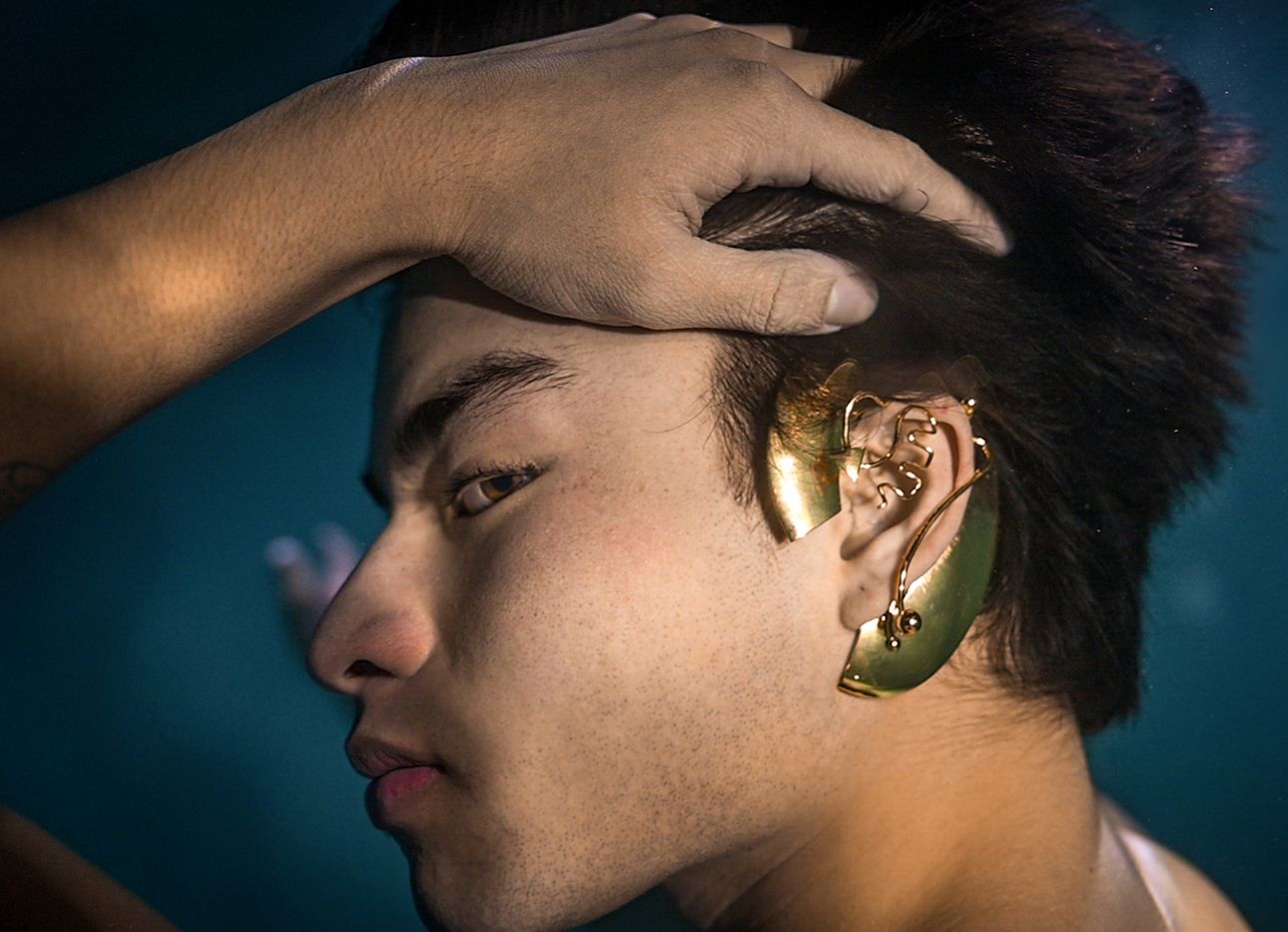
An Expressive Jewelry Line That Celebrates the Devices Worn by Deaf and Hard-of-Hearing People
Brooklyn-based model, artist, and activist Chella Man received his first hearing aids when he was 4 years old. Eight years later, he received cochlear implants, an electronic device that partially restores hearing. It consists of a sound processor that cups the back half of the ear, and a receiver and stimulator that’s surgically implanted under the skin and delivers sound signals to the auditory nerve via electrodes that are threaded into the cochlea, a spiral cavity of the inner ear. Cochlear implants also feature an external unit, which is attached to the head behind the top part of the ear, that serves as a speech processor, microphone, or transmitter. While grateful for the implements, Man long felt a disconnect between their conspicuous appearance and his self. “I’ve always strived for the agency over the ways I present myself in this world,” he says. “But with my cochlear implants, I have no say in how they are designed or what they look like.”
The quandary informed a jewelry collection that Man released earlier this year in collaboration with the New York fashion label Private Policy. Together with designers Siying Qu and Haoran Li, Man created eight gold-plated metal ear accessories that accentuate and embellish hearing devices or cochlear implants with expressive, abstract shapes. To mark the launch of the project, Man wrote and directed a short film that featured himself, alongside model Rayly Aquino and dancer Raven Sutton (who are both also deaf), wearing the jewelry while submerged in water. Half of the accessories’ profits will be donated to the San Francisco–based Deaf Queer Resource Center, a nonprofit that Man, who identifies as genderqueer and trans-masculine, sees as a much-needed source of community for people like him. Here, Man speaks about the jewelry line, and the stereotypes about deaf and hard-of-hearing communities that he’s working to combat.
“There are so many myths about deaf culture. We do not all use sign language. We do not all read lips. Cochlear implants do not bring back all of your hearing, and they do not sound like human hearing; it’s all mechanical. And we can drive! There have actually been studies confirming that deaf individuals are better drivers than hearing individuals due to their heightened focus on vision.
Growing up facing continuous ableist comments and stereotypes, I wanted to show non-disabled individuals the true beauty within disability—the true beauty of being deaf. So, I always imagined shooting a film underwater, [with people] signing. Because as a line states at the end of the film: ‘How beautiful is it to be able to communicate underwater?’
When designing the pieces, I was at an artist residency in Brescia, Italy. I found myself mesmerized by the art there. In particular, I was drawn to the sixteenth-century hilts, or handles, of swords, including ones I saw at the Castle of Brescia. The metal or brass grips twist around a hand in the same way that I wanted the jewelry pieces to wrap around an ear—allowing the tool to remain functional, while enhancing that functionality with its compositional structure.
The jewelry looks exactly like my sketches. It feels authentic to me and the style of my art. Having these shapes superimposed with the design of my cochlear implants enables me to reclaim how that area of my body is perceived.
Throughout history, disabled individuals have often been swept aside and erased due to the [belief] that our worth comes from our ability to move, navigate, and succeed in specific, limiting ways. To change this, bring more disabled individuals to the forefront to tell their stories! We are all so very different, and the more [visibility] we have, the more realistic our portrayal of the world truly is. Disabled individuals make up more than fifteen percent of the world’s population. It’s about time we have representation.”